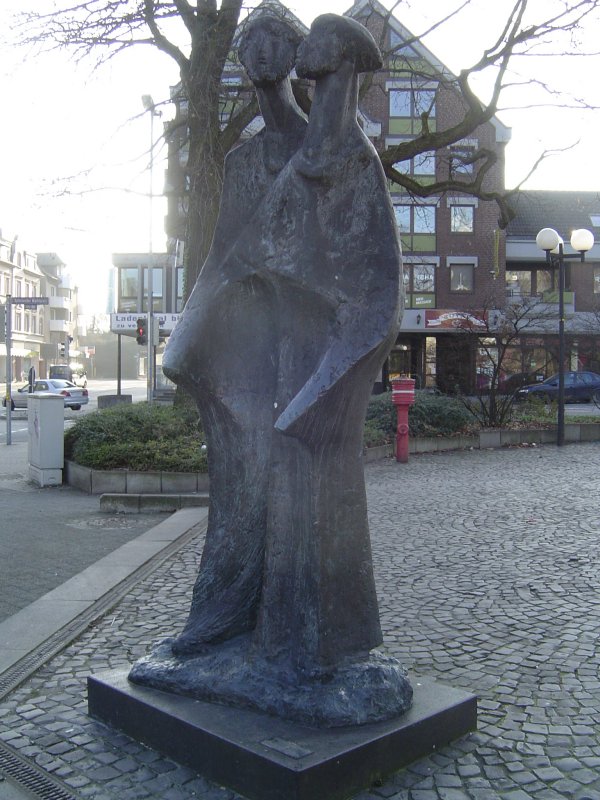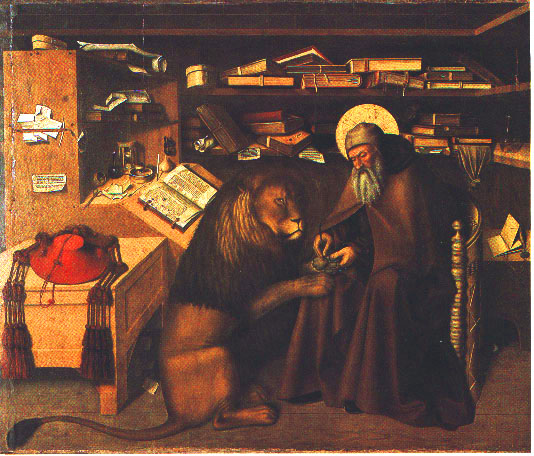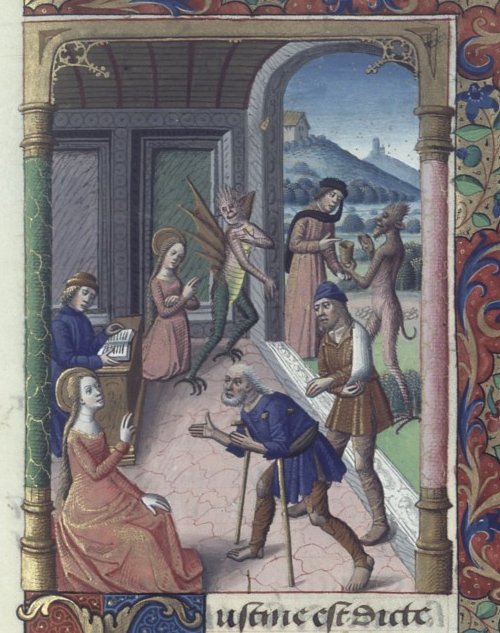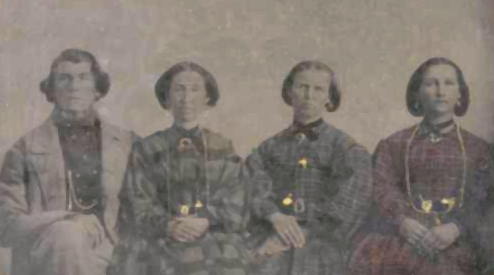ST LAMBERT, BISHOP OF MAESTRICHT, MARTYR (c. A.D. 705)
An account from Butler’s Book of Saints of the life of a churchman during the turbulent rule of the Merovingian Franks.
St Landebert, called in later ages Lambert, was a native of Maestricht, and born of a noble and wealthy family between the years 633 and 638. His father sent him to St Theodard to perfect his education. This holy bishop had such an esteem for his pupil that he spared no trouble in instructing and training him in learning and Christian virtue, and he was a credit to his master: his biographer, who was born soon after Lambert’s death, describes him as, “a prudent young man of pleasing looks, courteous and well behaved in his speech and manners; well built, strong, a good fighter, clear-headed, affectionate, pure and humble, and fond of reading”. When St Theodard, who was bishop of Tongres-Maestricht, was murdered, Lambert was chosen to succeed him; but the tyrannical Ebroin was reinstated as mayor of the palace when the Austrasian king, Childeric II, was slain in 674, and he at once began to revenge himself on those who had supported Childeric. This revolution affected St Lambert, who was expelled from his see. He retired to the monastery of Stavelot, and during the seven years that he continued there he obeyed the rule as strictly as the youngest novice could have done. One instance will suffice to show how he devoted his heart to serve God according to the perfection of his temporary state. One night in winter he let fall his shoe, so that it made a noise. This the abbot heard, and he ordered him who was responsible for that noise to go and pray before the great cross, which stood outside the church door. Lambert, without making any answer, went out as he was, barefoot and covered only with his shirt; and in this condition he prayed, kneeling before the cross, three or four hours. Whilst the monks were warming themselves after Matins, the abbot inquired if all were there. Answer was made that he had sent someone to the cross who had not yet come in. The abbot ordered that he should be called, and was surprised to find that the person was the Bishop of Maestricht, who made his appearance almost frozen.
In 681 Ebroin was assassinated, and Pepin of Herstal, being made mayor of the palace, expelled the usurping bishops and, among other exiled prelates, restored St Lambert to Maestricht. The holy pastor returned to his flock animated with redoubled fervour, preaching and discharging his other duties with wonderful zeal and fruit. Finding there still remained many pagans in Kempenland and Brabant he applied himself to convert them to the faith, softened their barbarous temper by his patience, regenerated them in the water of baptism, and destroyed many superstitious observances. In the neighbourhood of his own see he founded with St Landrada the monastery of Munsterbilzen for nuns.
Pepin of Herstal, after living many years in wedlock with St Plectrudis, entered into adulterous relations with her sister Alpais (of whom was born Charles Martel), and St Lambert expostulated with the guilty couple. Alpais complained to her brother Dodo, who with a party of his followers set upon St Lambert and murdered him as he knelt before the altar in the church of Saints Cosmas and Damian at Liege. That is the later story of the circumstances of St Lambert’s death, but his earliest biographers, writing in the eighth and tenth centuries, tell a quite different tale. According to them, two relatives of Lambert, Peter and Andolet, killed two men who were making themselves obnoxious to the bishop. When Dodo, a kinsman of the men thus slain, came with his followers to take revenge, Lambert told Peter and Andolet that they must expiate their crime. They were killed on the spot; and when the bishop’s room was found to be barred, one of Dodo’s men climbed to the window and cast a spear which killed Lambert too, as he knelt in prayer. This took place at a house where is now the city of Liege.
Lambert’s death, suffered with patience and meekness, joined with the eminent sanctity of his life, caused him to be venerated as a martyr. His body was conveyed to Maestricht. Several miracles which ensued excited the people to build a church where the house stood in which he was slain, and his successor, St Hubert, translated thither his relics. At the same time he removed to the same place the episcopal see of Tongres-Maestricht, and around the cathedral which enshrined the relics of 8t Lambert the city of Liege grew up. He is to this day the principal patron of that place.









